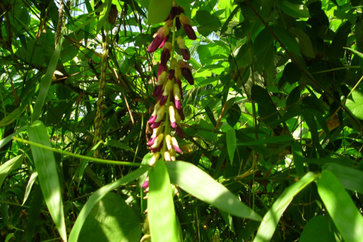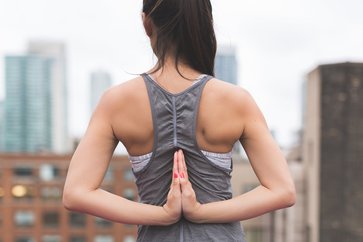Benefits of Shodhana (Body Cleansing) According to Acharya Vagbhata
Shodhana refers to the process of cleansing the body from impurities, which include morbid doshas (bodily humors) and malas (excreta or waste products). These impurities, when accumulated in the body over time, can cause blockages in the body’s channels (sroto avarodha), impair the digestive fire (agni), weaken the body’s tissues (dhatus), build up toxicity, and deplete strength.  Over time, these imbalances lead to various diseases. Thus, it becomes crucial to regularly flush out these impurities to maintain a clean and clear system. A clean system is a hallmark of overall health. Proper cleansing, known as ‘apunarbhava chikitsa’, acts as a preventive strategy to avoid the recurrence of diseases.
Over time, these imbalances lead to various diseases. Thus, it becomes crucial to regularly flush out these impurities to maintain a clean and clear system. A clean system is a hallmark of overall health. Proper cleansing, known as ‘apunarbhava chikitsa’, acts as a preventive strategy to avoid the recurrence of diseases.
This preventive approach emphasizes the importance of Shodhana to restore and maintain balance, ultimately promoting immunity, endurance, and longevity. Ayurveda considers Shodhana as one of the most important therapeutic strategies, especially when dealing with conditions where Shodhana is indicated.
The diseases that are conquered through Shodhana therapies are less likely to reappear, and this contributes to long-term immunity and better quality of life.
Shodhana Therapy in Ayurveda
Shodhana therapy, as part of Ayurvedic treatments, is a series of cleansing processes designed to eliminate toxins (known as ama) from the body, restore balance, and rejuvenate overall health. These processes are integral components of Panchakarma, an advanced Ayurvedic detoxification therapy. Here’s a breakdown of the primary Shodhana procedures:
1. Vamana (Therapeutic Emesis)
- Purpose: Vamana is a controlled therapeutic vomiting technique used to eliminate excess mucus and kapha dosha (one of the three doshas responsible for the body’s functioning in Ayurveda). It is commonly employed to treat respiratory disorders, digestive issues, and conditions related to congestion.
- Process: Involves inducing vomiting using herbal medicines and decoctions. This helps to clear the upper digestive tract and respiratory system.
2. Virechana (Therapeutic Purgation)
- Purpose: Virechana aims to cleanse the lower gastrointestinal tract, primarily targeting excess pitta dosha. It is useful for conditions like skin disorders, jaundice, and digestive disturbances.
- Process: This involves the administration of medicinal purgative herbs, which induces controlled purging through the bowels, helping to eliminate toxins from the body.
3. Asthapana Vasti (Enema with Decoctions)
- Purpose: Asthapana Vasti is a therapeutic enema therapy designed to cleanse the lower part of the body, especially the colon, and balance vata dosha. It is beneficial for constipation, bloating, and various vata-related issues.
- Process: The procedure involves administering medicated herbal decoctions or oils through the rectum. The combination of herbs used is based on the patient’s dosha imbalances and health conditions.
4. Shirovirechana (Nasya – Nasal Administration of Medicaments)
- Purpose: This procedure involves the nasal administration of medicinal oils or powders to cleanse the head region, which is particularly beneficial for conditions involving the sinuses, headaches, mental health, and neurological disorders.
- Process: Medicinal substances are introduced into the nostrils, helping to clear out accumulated toxins from the nasal passages, sinuses, and even the mind.
5. Anuvasana Vasti – Excluded from Shodhana
- Although Anuvasana Vasti is a part of Panchakarma, it is primarily a therapeutic enema aimed at nourishing and lubricating the body, rather than cleansing. It involves the administration of oil-based solutions to the colon and is more supportive, promoting rejuvenation rather than detoxification.
Benefits of Shodhana (Body Cleansing) in Ayurveda
Shodhana, the Ayurvedic purification therapy, offers profound health benefits as delineated by Acharya Vagbhata in his seminal work, Ashtanga Hridaya. In the Ashtanga Hridaya, Acharya Vagbhata emphasizes five main benefits of Shodhana, which are as follows:
1. Buddhi Prasadam – Enhancing Mental Clarity and Calmness
Shodhana plays a pivotal role in improving cognitive functions and emotional well-being:
- Cognitive Enhancement: By eliminating accumulated toxins, Shodhana enhances memory, concentration, and decision-making abilities, leading to improved intellectual performance.
- Emotional Balance: The purification process helps in stabilizing emotions, reducing stress and anxiety, and promoting a sense of inner peace.
- Neurological Health: Shodhana supports the nervous system by removing impurities that may contribute to neurological disorders, thereby fostering overall mental health.Easy Ayurveda Hospital+1Ayurvedic India+1
- Hormonal Regulation: The therapy aids in balancing hormones that influence mood and cognitive functions, contributing to mental clarity and emotional stability.
- Detoxification: By cleansing the body of toxins, Shodhana reduces the burden on the brain, facilitating clearer thinking and better focus.
2. Balam Indriyanam – Strengthening the Sense Organs
The purification process bolsters the functionality of various sensory and motor organs:
- Sense Organs (Jnanendriyas): Shodhana enhances the efficiency of sight, hearing, taste, touch, and smell, leading to a heightened sensory experience.
- Organs of Action (Karmendriyas): It improves the performance of motor organs responsible for speech, movement, and other physical actions, promoting better coordination and agility.
- Mind (Ubhayendriya): By cleansing mental impurities, Shodhana enhances cognitive functions such as thinking, reasoning, and memory, leading to improved mental clarity.
- Sensory-Motor Coordination: The therapy harmonizes the interaction between sensory inputs and motor responses, ensuring coordinated physical actions.
- Perception and Response: Shodhana refines the ability to perceive stimuli accurately and respond appropriately, enhancing overall sensory-motor functions.
3. Dhatu Sthiratvam – Supporting and Stabilizing Body Tissues
Shodhana contributes to the integrity and resilience of bodily tissues:
- Tissue Purification: By expelling morbid doshas, Shodhana prevents the invasion of toxins into tissues, preserving their health and functionality.
- Enhanced Tissue Nutrition: The therapy improves the absorption of nutrients by tissues, supporting their growth and repair.
- Strengthening Immunity: Purified tissues bolster the body’s defense mechanisms, enhancing resistance to infections and diseases.Easy Ayurveda Hospital
- Detoxification: Shodhana removes accumulated waste products from tissues, reducing the risk of chronic diseases and promoting overall health.
- Structural Integrity: By maintaining the health of tissues, Shodhana supports the structural framework of the body, contributing to physical strength and stability.
4. Jwalanasya Diptim – Stimulating Digestive Fire
The therapy revitalizes the digestive system, ensuring optimal nutrient assimilation:
- Agni Enhancement: Shodhana stimulates the digestive fire (agni), improving appetite and the efficiency of digestion.
- Detoxification: By cleansing the gastrointestinal tract, it removes accumulated waste (ama), reducing bloating and discomfort.
- Metabolic Balance: A balanced agni ensures proper metabolism, aiding in weight management and energy production.
- Nutrient Absorption: Improved digestion facilitates the effective absorption of nutrients, supporting overall health and vitality.
- Prevention of Digestive Disorders: Regular Shodhana prevents common digestive issues such as indigestion, acidity, and constipation.
5. Chirat Pakam Vayasah – Slowing Down the Aging Process
Shodhana acts as a rejuvenating therapy, promoting longevity and vitality:
- Tissue Rejuvenation: By cleansing tissues of accumulated toxins, Shodhana supports the regeneration of healthy cells, contributing to a youthful appearance.
- Ojas Enhancement: The therapy enhances ojas (vital energy), improving strength, immunity, and overall vitality, which are often associated with youthfulness.
- Detoxification: By removing waste products and toxins, Shodhana reduces the burden on the body’s systems, promoting longevity and reducing the risk of age-related diseases.
- Hormonal Balance: The purification process helps in balancing hormones that influence aging, supporting the maintenance of youthfulness.
- Skin Health: Cleansing the body of toxins improves skin health, leading to a clearer complexion and a reduction in signs of aging.
Incorporating Shodhana into one’s health regimen, under the guidance of qualified Ayurvedic practitioners, can lead to comprehensive well-being, addressing both physical and mental health aspects.
FAQ’s
1. What are the benefits of Shodhana therapy?
Shodhana therapy, which refers to cleansing or detoxification, helps to eliminate accumulated toxins (ama) from the body, balance the doshas (Vata, Pitta, and Kapha), and promote overall health and vitality. It supports the immune system, improves digestion, enhances mental clarity, and restores harmony.
2. What is Shodhana in Ayurveda?
In Ayurveda, Shodhana refers to a series of therapeutic procedures aimed at detoxifying the body and mind. It involves cleansing treatments like Panchakarma, which can help to purify the body, remove toxins, and restore balance.
3. What is the importance of Ritu Shodhana?
Ritu Shodhana refers to seasonal cleansing in Ayurveda, which is important because the body’s needs change with the seasons. This practice helps the body adjust to seasonal shifts by detoxifying and preventing imbalances that could arise due to changes in diet, weather, and lifestyle.
4. How to clean a body according to Ayurveda?
Ayurveda recommends several ways to cleanse the body, including diet adjustments, herbal treatments, fasting, sweating, and specialized therapies like Panchakarma. A holistic approach is taken, considering one’s dosha and the season.
5. What is the difference between Panchakarma and Shodhana?
Panchakarma is a specific set of five therapeutic treatments that fall under the umbrella of Shodhana (cleansing). While Shodhana refers to the overall detox process, Panchakarma is the practical, hands-on process to carry out this cleansing, including treatments like Vamana, Virechana, Basti, Nasya, and Raktamokshana.
6. What are the spiritual benefits of alternate nostril breathing?
Alternate nostril breathing (Nadi Shodhana) is believed to balance the body’s energy channels, calm the nervous system, and promote mental clarity. Spiritually, it is said to enhance meditation, reduce stress, and harmonize the mind and emotions, fostering a deeper sense of inner peace.
7. What is the importance of Shodhan?
Shodhan is crucial for maintaining physical and mental health in Ayurveda. It helps remove toxins, restore balance to the doshas, and improve bodily functions, leading to rejuvenation and longevity.
8. What are the scientific benefits of Nadi Shodhana?
Scientifically, Nadi Shodhana (alternate nostril breathing) has been shown to reduce stress, enhance lung capacity, improve focus, and regulate the autonomic nervous system. It may also help in lowering blood pressure and improving overall emotional well-being.
9. What are the different types of Shodhana?
Types of Shodhana include dietary cleanses, herbal treatments, fasting, Panchakarma therapies, and lifestyle adjustments, all tailored to an individual’s doshic imbalance.
10. Which is better, Anulom Vilom and Nadi Shodhana?
Anulom Vilom is a form of Nadi Shodhana (alternate nostril breathing), and both terms are often used interchangeably. However, if you are asking about their specific effects, Nadi Shodhana typically emphasizes balancing the body’s energy channels (nadis), while Anulom Vilom focuses on breathing techniques. Both have similar benefits, so the choice depends on your goals and preferences.
11. What is Shodhana karma?
Shodhana Karma refers to the process or actions involved in cleansing or purifying the body and mind. It is the therapeutic procedure to remove toxins (ama) and restore balance, often conducted in conjunction with Panchakarma treatments.
12. Which season is best for Virechana?
Virechana (purgation therapy) is most effective in the summer season when Pitta dosha is high. During this time, the body tends to accumulate heat and toxins, making it an ideal period for detoxifying and cleansing.
13. What is the process of Shodhan?
The process of Shodhan includes preparation (such as dietary changes or herbal treatments), cleansing (through therapies like Panchakarma), and rejuvenation (using restorative treatments to rebuild and balance the body after cleansing).
14. What are the spiritual benefits of Nadi Shodhana pranayama?
Nadi Shodhana Pranayama (alternate nostril breathing) offers spiritual benefits by helping practitioners achieve a state of calmness, mental clarity, and focus. It is also said to balance the left and right hemispheres of the brain, promoting harmony between body and mind. Many practitioners find it helps deepen their meditation practice.
Shodhana is a powerful purification process designed to rid the body of toxins and restore balance. Whether used as a preventive measure or as part of treatment for specific diseases, it is a crucial aspect of Ayurveda that enhances health, longevity, and vitality.


























